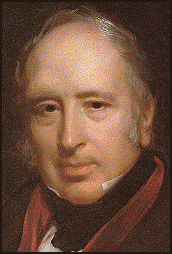George Cayley

George Cayley was born in Scarborough, Yorkshire, in 1773. He studied under George Walker, the scientist and mechanic.
Cayley spent most of his life experimenting with flying machines. In 1804 Cayley constructed a a model monoplane glider that was five feet (1.52 m) long. The model featured an adjustable cruciform tail, a kite-shaped wing mounted at a high angle of incidence and a moveable weight to alter the center of gravity.
By 1816 Cayley designed a streamlined airship with a semi-rigid structure. Later he designed an airship to be powered by a steam engine.
Cayley was the first to define the principles of mechanical flight. According to Cayley it was necessary "to make a surface support a given weight by the application of power to the resistance of air". Cayley realised that control of flight could not be achieved until a lightweight engine was developed to give the thrust and lift required.
In 1832 Cayley helped organize the first meeting of the British Association for the Advancement of Science. Seven years later he established the Regent Street Polytechnic in London.
It was not until 1853 that Cayley managed to build a machine that could carry the weight of a man. He also built a triplane and in 1853 persuaded his coach driver to fly 900 feet (275 m) across a small valley. This was the first recorded flight by a person in an aircraft and Cayley has been described as the "true inventor of the aeroplane". It is generally believed that it was the first practical heavier-than-air flying machine.
Cayley was also interested in railway engineering and land reclamation. He also invented a new type of telescope, artificial limbs and a caterpillar tractor.
Sir George Cayley died in 1857.
